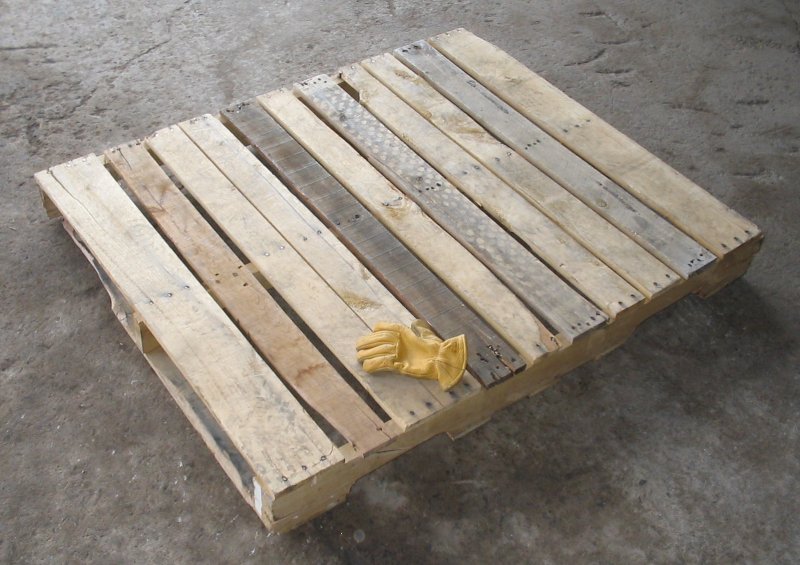I spend a lot of time on Pinterest looking for DIY projects, and one thing you see a lot of on the Pinterest "DIY & Crafts" section is projects that "upcycle" old wooden pallets.
This (usually) horrifies me, because these projects often seemed destined for interior spaces and never seem to mention the dangers of using pallets.
First, some background. I used to work in retail, and most of my time was spent in the shipping and receiving department where we would get most of our deliveries on these wooden pallets. Aside from the issues of rusty nails and splintering wood (obvious to the naked eye,) the pallets often had a funny smell. Our delivery driver explained that the pallets travel all around the world and get passed around between different shipping companies quite frequently. In some cases, they sit in warehouses where workers aren't allowed bathroom breaks. Guess where they choose to relieve themselves. Trust me; no one bothers to clean these things if they're getting rid of them, either. In fact, these things are so expensive to produce that boards are reused over and over and over again to the point where you can't really be sure where each piece of wood in any particular pallet has been. Moreover, he explained, in order to extend the life of these things as long as possible, they're treated with all kinds of chemicals. Some pallets are treated with formaldehyde. Others are treated with fungicides.
When you're sawing or sanding this wood, you're kicking up dust and exposing yourself to all of these chemicals. The worst is when I see projects that use pallets for tables, children's furniture, and bed frames or headboards. Again, by the time these things get to the point where they have been discarded, they have been chemically treated, sitting out in the open around the world, getting exposed to bugs and microbes that don't necessarily exist (naturally) in your region of the world. There are ways to treat the wood to get rid of all this stuff, but to get rid of the pests, you'd have to use pesticide. Then you'd have to use fungicide to get rid of the mold. I don't know what you'd do to get rid of the E. coli (you know, from the feces.) You'd probably need to give them a steam bath to get the formaldehyde out and then immediately kiln dry the wood to get rid of all that moisture you just introduced. At any rate, you get the idea. Sanding and washing the wood isn't going to take care of it. You can probably seal it somehow, but, again, you want to make sure you've gotten all the mites out of it.
When articles do mention how to get yourself some safe pallets, they usually say to only use ones that have been heat treated. These ones are stamped with "HT." While these pallets haven't been chemically treated, keep in mind that if they have spent ANY time outside (and unless they're brand-new and aren't made from recycled pallets, they have spent time outside) they've been exposed to insects (many of whom love to burrow into the wood and live there,) moisture (mold,) water (and waterborne pathogens) and animal feces.
So, now you, too, can be horrified looking at these projects. I will say that some pallet projects look fine: making a potting table that stays outside, using it in your garden (as long as it's not near anything you plan to eat,) and making a rustic sign to hang outside all seem like fine uses for pallets. But you won't see me working with them, and if you choose to, you probably want to be wearing a respirator (along with all the standard protective gear.)

No comments:
Post a Comment